I often refer to how I set up my Field Notes on social media, but I’ve never done a full blog post about my set up. I keep waiting for a time when I have just set up a new book but not written much yet. I am finally at the perfect moment- I have just started a new book and have only filled a few pages.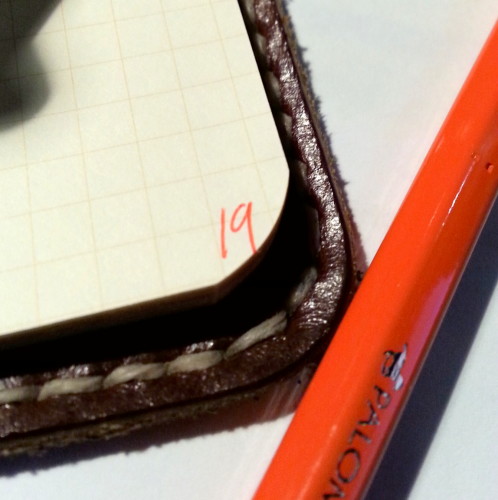 I start by numbering each page, preferably with a red Uniball Signo 0.38. If I can’t find the red I’ll use a black ultra fine pen. I use the Signo for it’s waterproof ink and super fine writing capability. It also does not feather or bleed on any paper.
I start by numbering each page, preferably with a red Uniball Signo 0.38. If I can’t find the red I’ll use a black ultra fine pen. I use the Signo for it’s waterproof ink and super fine writing capability. It also does not feather or bleed on any paper.
The first page becomes my index. I fold the page in half and write 2- 48. Each line represents a page in the book. As I fill the page, I log it on the index page. I try to stick to simple one or two word descriptions. This lets me find pages with ease. On books with a large top margin (Ambition/Word.) I’ll write an expanded description on this line, otherwise, nothing.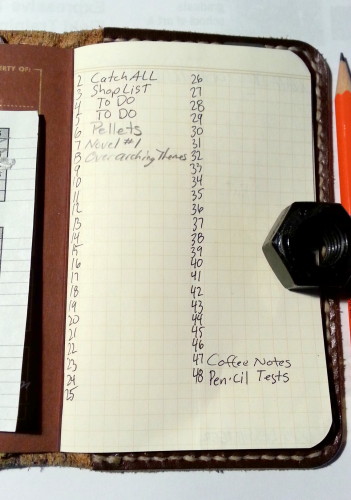 I have a few set pages that I put in each book. Page two is always a catch all page. This page captures quick info; phone numbers, passwords, websites, words, page numbers, and the like. Specifically info that is ephemeral and I may not need to dedicate a full page. Page three becomes my shopping list. Generally, this isn’t for things like bread and milk, but larger items we run out of less often; light bulbs, laundry detergent, or things like staples, glue, etc… The things I might forget to buy when I’m in a store like home despot or target. Pages four and five are my to do lists. Four is usually dedicated to my blog while five is my school and life. Page forty-eight, the final page of the book, is always my pen and pencil testing page. This lets me test out pens or pencils in store to see how they will work on this particular paper. Then page forty-seven is where I log the types of brews I’m using for my coffee. How much coffee to water was used, how did the brew turn out, etc.
I have a few set pages that I put in each book. Page two is always a catch all page. This page captures quick info; phone numbers, passwords, websites, words, page numbers, and the like. Specifically info that is ephemeral and I may not need to dedicate a full page. Page three becomes my shopping list. Generally, this isn’t for things like bread and milk, but larger items we run out of less often; light bulbs, laundry detergent, or things like staples, glue, etc… The things I might forget to buy when I’m in a store like home despot or target. Pages four and five are my to do lists. Four is usually dedicated to my blog while five is my school and life. Page forty-eight, the final page of the book, is always my pen and pencil testing page. This lets me test out pens or pencils in store to see how they will work on this particular paper. Then page forty-seven is where I log the types of brews I’m using for my coffee. How much coffee to water was used, how did the brew turn out, etc.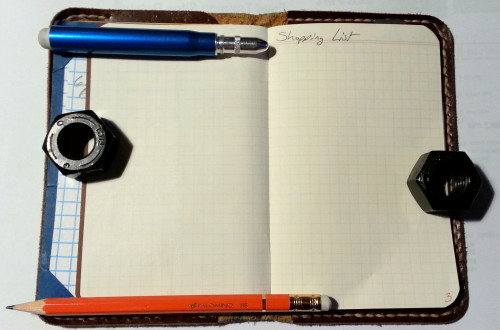
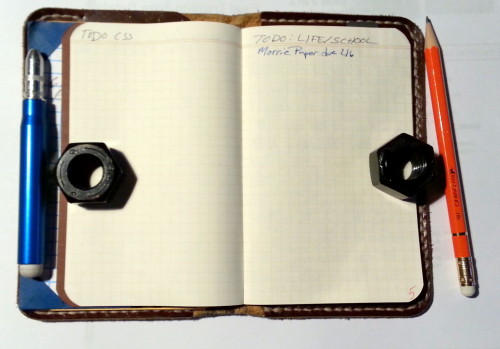
 The final addition to the book is a 3 month calendar. You can find them online or as a word template. I print one off and then cut out 3 months. I use washi tape to stick it into my book over my address section. I cross off the days as I remember, but this has become very useful when I’m planning things for classes and meet ups with friends and I don’t want to drag out my planner.
The final addition to the book is a 3 month calendar. You can find them online or as a word template. I print one off and then cut out 3 months. I use washi tape to stick it into my book over my address section. I cross off the days as I remember, but this has become very useful when I’m planning things for classes and meet ups with friends and I don’t want to drag out my planner.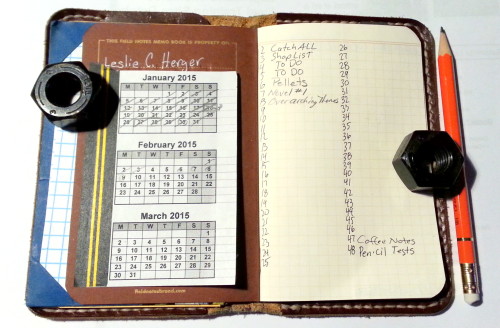 After that the rest of the book is a free for all.
After that the rest of the book is a free for all.
When the book is filled I log it into a master index book and file it away. The master index is another field notes book where each page looks like the index for each book. Each book is logged on it’s own page. The descriptions are expanded slightly to be more descriptive, but only if they need to be. If the index states “paper,” it is expanded to state, “Theories F14,” so that I have a better idea of which paper it refers. However if it’s logged as “journal,” there is no need to expand upon that , unless the journaling deals with something specific that I may need to refer to later. This system lets me grab my index book, flip to about where I think I logged something, scan through quickly and find that “Theories F14” entry and pull the right book in less than a minute.
Of course this system works because I’m only searching through an index of 20 or so books. (I did not go backward and index my older books, I’m not quite that neurotic.) As my index, and number of books, grows searching will become more difficult and more time consuming.While I was a wiz with the card catalog when I was a kid, I don’t relish the idea of combing through multiple index books. At some point I will need to digitize my collection of notebooks. I’m resistant to this now, but I do see the need for it later, as I amass more and more books. I’m not sure what application I’ll use to do this- Evernote, OneNote, or some other platform. Who knows what will be available when I do finally decide to digitize.